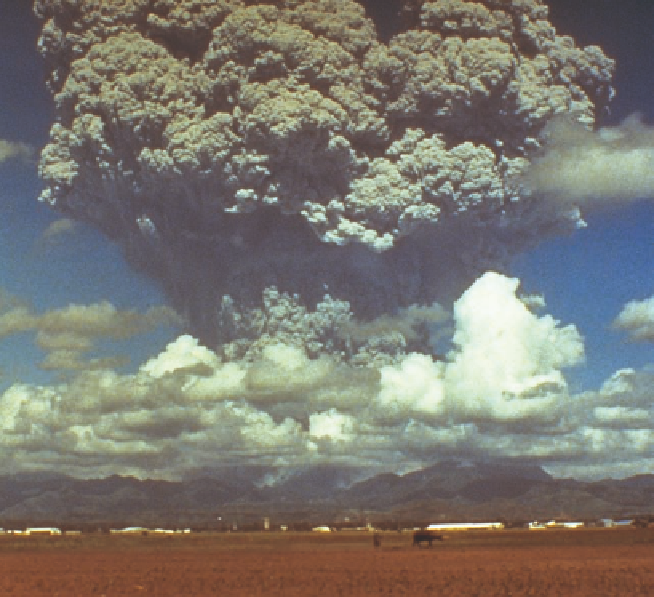Environmental Engineering Reference
In-Depth Information
16
Water
Climate
Control
Climate Change and Ozone Loss
Air
CASE STUDY
Studying a Volcano to
Understand Climate Change
how the earth's temperature would change. His
model passed the test with flying colors. Its success
helped convince most scientists and policy makers
that climate model projections—including the impact
of human actions—should be taken seriously.
Hansen's model and more than a dozen other
climate models indicate that global temperatures are
likely to rise several degrees over the next hundred
years—in part because of human actions—and affect
the earth's global and regional climates, economies,
and our way of life. To many scientists, climate change
represents the biggest challenge humanity faces dur-
ing this century. The primary question now is this:
What should we do about it?
In 1991, NASA scientist James Hansen announced that
the recent explosion of a volcano in the Philippines
would probably cool the average temperature of the
earth by 0.5°C (1°F) over a 15-month period. The earth
would then begin to warm, returning to the tempera-
tures observed before the explosion by 1995. His pre-
dictions turned out to be correct.
The volcano in question was Mount Pinatubo
(Figure 16-1). After 600 years of slumber, in June 1991
it exploded in the second-largest volcanic eruption of
the 20th century (the largest took place in Alaska in
1912). A huge amount of volcanic material blasted out
of the mountain, sending a cloud of gas and ash to a
height of 35 kilometers (22 miles). Simultaneously,
avalanches of hot gas and ash roared down the sides
of the mountain, killing hundreds of people and fill-
ing valleys with volcanic deposits.
The eruption of Mount Pinatubo was a terrible
catastrophe, killing many people, destroying homes
and farmland, and causing hundreds of millions of
dollars in damage. At the same time, the tragedy en-
abled scientists to test whether they understood the
global climate well enough to estimate how the erup-
tion would affect temperatures on earth.
By the late 1980s most of the world's climate sci-
entists had become concerned that human actions
(such as fossil fuel use) were contributing to
global
warming
—a rise in the temperature of the entire earth.
By the late 1980s, some were so worried that they
stated publicly that global warming was likely to oc-
cur and could have disastrous ecological and eco-
nomic effects. Their concerns were based in part on re-
sults from computer models of the global climate. But
were these models reliable?
Although the complex global climate models
mimicked past and present climates well, scientists
wanted to perform a more rigorous test. Mount
Pinatubo provided just such a test. To make his fore-
casts, Hansen added the estimated amount of sulfur
dioxide released by the volcano's eruption to a global
climate model and then used the model to forecast
Figure 16-1
Science:
an enormous cloud of gas and ash rises above
Mount Pinatubo in the Philippines on June 12, 1991. Three days later,
the volcano exploded in a cataclysmic eruption, killing hundreds.
Sulfur dioxide and other gases emitted into the atmosphere by the
eruption circled the globe, reduced sunlight reaching the earth's
surface, and cooled the atmosphere for 15 months. Scientists used
this event to test global climate models.


